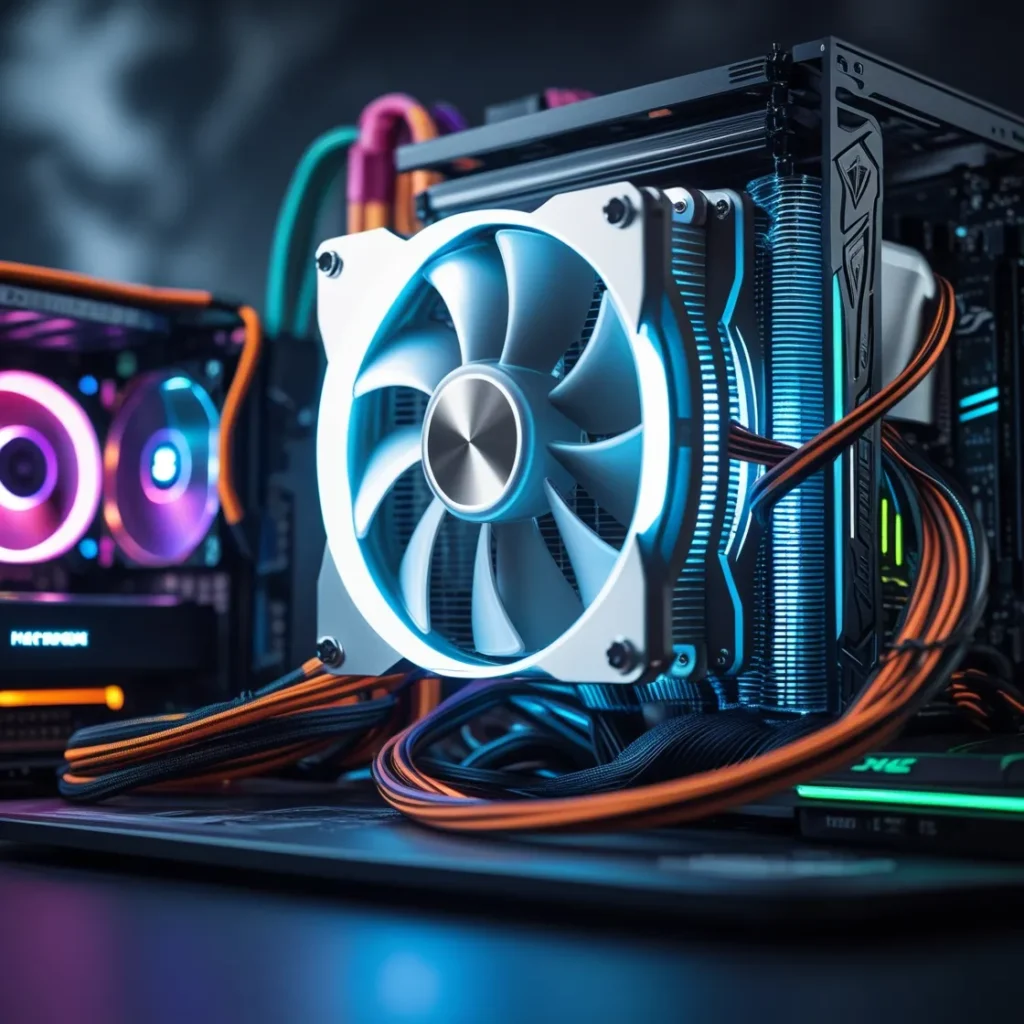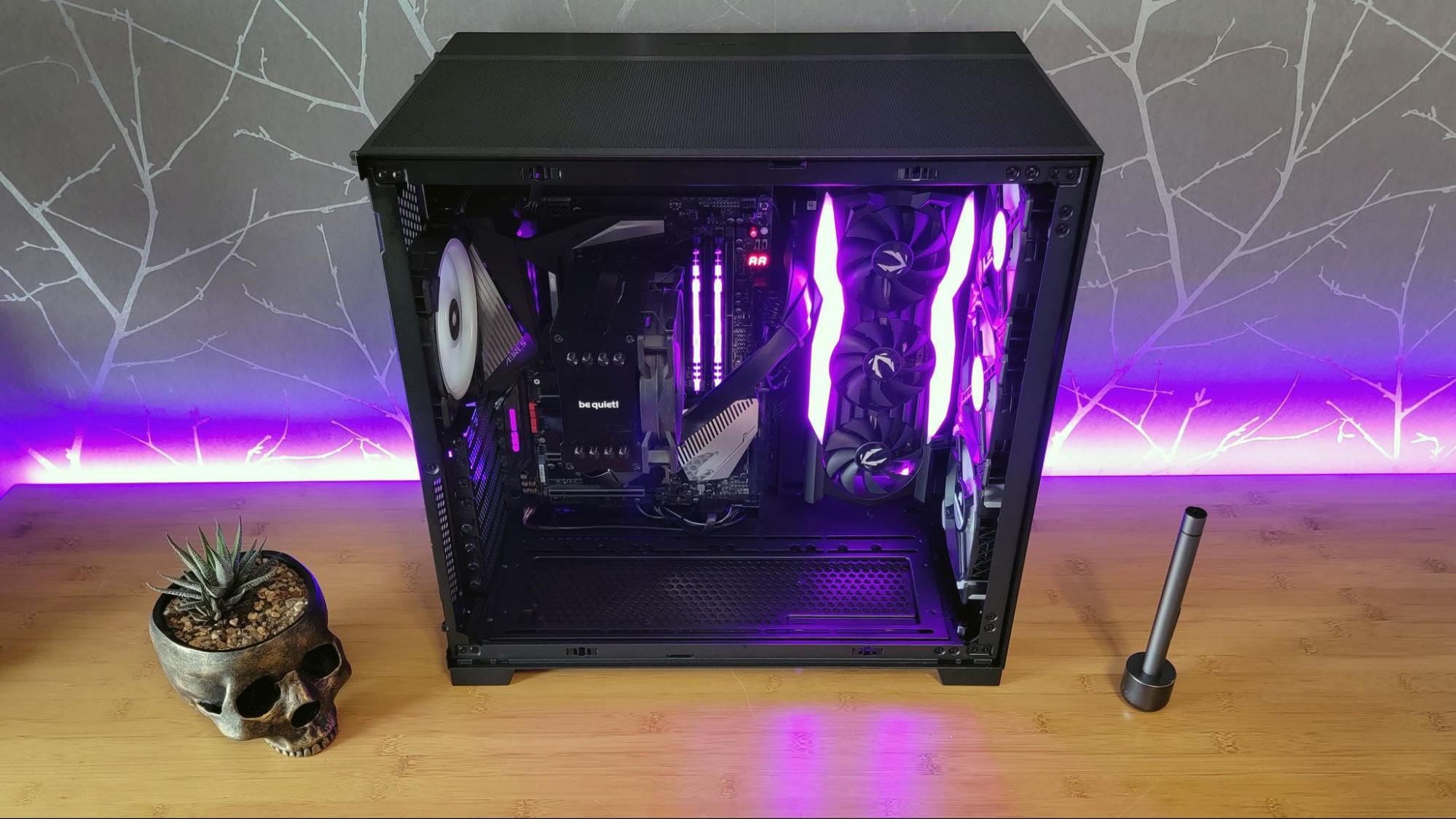
Cooling Fan in PC
How the Latest Cooling Fan in PC Technology is Keeping Systems Cooler Than Ever-The world of PC technology is ever-evolving, and one of the most crucial elements for keeping systems running efficiently is the cooling system. Among the many components responsible for managing heat, the cooling fan in PC technology has seen significant advancements. These innovations in cooling technology are ensuring that today’s computers remain cooler and more efficient than ever before, allowing users to push their systems to new limits.
The Importance of Cooling Fans in PC Systems
To understand the importance of the latest cooling fan in PC technology, we need to first acknowledge the challenges that come with high-performance systems. Modern PCs, whether they’re used for gaming, content creation, or heavy computational tasks, generate significant heat. Overheating can cause a slowdown in performance, system instability, or even permanent hardware damage.
A cooling fan in PC technology helps to dissipate the heat generated by various components such as the CPU, GPU, and power supply. Without an effective cooling solution, your PC could experience thermal throttling, where components slow down to prevent overheating, ultimately affecting performance. This is why upgrading or choosing the right cooling fan is so critical for maintaining the optimal functioning of your computer.
The Evolution of Cooling Fan in PC Technology

Historically, cooling fans in PCs were quite basic. They usually consisted of a single fan, typically installed on the CPU or case. While this was sufficient for low to mid-range systems, it wasn’t enough for high-performance setups or overclocked systems, which generate a lot more heat. Over time, manufacturers began to innovate, incorporating features such as larger fans, more efficient blade designs, and multi-fan configurations to enhance airflow.
The introduction of liquid cooling systems also played a significant role in reducing temperatures, though many enthusiasts still rely on air cooling fans for simplicity and cost-effectiveness. Modern cooling fans in PC setups have thus become a blend of both air and liquid cooling solutions, providing users with more flexible and reliable options. (Read More: Why Cool ATX PC Cases Are a Must-Have for Every Builder This Year)
Key Features of the Latest Cooling Fan in PC Technology

Improved Blade Design for Better Airflow
One of the primary innovations in the latest cooling fan in PC technology is the improved blade design. Modern fans are designed with curved or angled blades that optimize airflow, ensuring that more air is directed toward the components in need of cooling. This new design minimizes turbulence and noise, improving the overall efficiency of the cooling system.
In addition, many of these fans use advanced materials like hydrodynamic bearings or ceramic bearings, which reduce friction and increase durability. The result is a fan that performs better, lasts longer, and operates with less noise – a crucial factor for gamers and content creators who need their systems to run quietly.
RGB Lighting for Aesthetics and Performance Monitoring
Another exciting development in cooling fans is the integration of RGB lighting. While the inclusion of LED lights may seem like a purely aesthetic choice, they can also serve a functional purpose. Some modern cooling fans in PC systems are designed to change colors or display different lighting patterns based on temperature, providing a quick visual indication of your system’s health.
This is particularly helpful for PC builders who are focused on performance and aesthetics. It also makes monitoring easier, as fans that glow red or change to a specific color when the system heats up provide a subtle but clear indicator of when your PC is getting too hot and needs attention.
High-Performance Fans for Overclocking
For PC enthusiasts who love pushing their systems to the max, overclocking is a popular practice. Overclocking involves running components like the CPU or GPU at higher speeds than their rated specifications, resulting in increased heat output. To prevent thermal issues, a high-performance cooling fan in PC systems is a must-have.
The latest cooling fans are specifically designed to handle the intense heat produced by overclocked components. These fans often feature higher RPMs (revolutions per minute) to move more air, as well as optimized designs that target airflow directly to high-heat areas. This ensures that even under heavy loads, your PC stays cool and stable. (Read More: Cool PC Monitor: Integrating Cutting-Edge Cooling Techniques for Optimal Display Quality 2025)
Advanced Technologies in Cooling Fans
Hybrid Cooling Systems
Hybrid cooling systems combine the best features of air and liquid cooling, offering the ultimate solution for temperature management. These systems use fans to move cool air over a radiator filled with coolant, which absorbs heat from the PC’s internal components. Hybrid solutions allow for even better thermal control, making them ideal for high-performance PCs, workstations, or gaming rigs.
These hybrid cooling solutions are becoming increasingly common in modern PCs. In fact, many cooling fan manufacturers now offer hybrid models that include both traditional fan blades and liquid cooling radiators. This combination offers exceptional performance while keeping the noise levels to a minimum.
Smart Cooling Technology
As PC systems get smarter, so do their cooling solutions. Many of the latest cooling fans in PC systems come with built-in sensors that detect temperature changes in real-time. These fans automatically adjust their speeds depending on the system’s internal temperature, ensuring optimal cooling at all times.
This smart technology eliminates the need for manual intervention, ensuring that the fan runs at its highest efficiency without the user needing to monitor temperatures constantly. These fans also help reduce noise by slowing down when the system is cool, contributing to a quieter computing experience. (Read More: Exploring the Impact of Cooling Mechanisms on Cool PC Monitor Efficiency)
The Role of Cooling Fan in PC Design and Case Layout

The layout of your PC case plays a crucial role in how well your cooling fan performs. An efficiently designed case with optimal airflow can significantly improve the performance of your cooling fan in PC systems. Modern cases are designed with multiple fan mounting options, allowing users to install additional fans in strategic locations for better airflow.
Additionally, cable management has become an essential part of PC design. By keeping cables neatly organized and out of airflow pathways, cooling fans can operate more efficiently. A clean, organized case with ample airflow will allow the cooling fans to perform their job without any obstructions, leading to lower temperatures and quieter operation.
The Future of Cooling Fan in PC Technology
As technology continues to evolve, so too will cooling solutions. We can expect to see more advanced materials, smarter sensors, and even more efficient designs in the future. One possibility is the integration of AI-driven cooling systems that analyze performance data and adjust cooling levels in real-time based on system demands.
With the rise of smaller, more compact PC builds, cooling solutions will also need to become more compact and efficient. We may see the development of smaller fans that can provide the same level of cooling performance as larger models, offering users the ability to build high-performance systems in smaller form factors without sacrificing cooling power.
The role of cooling fans in PC technology is set to become even more important as hardware demands continue to increase. Whether you’re a casual user, a gamer, or a professional content creator, keeping your system cool is essential for maintaining peak performance. With the latest cooling fan in PC technology, you can rest assured that your system will stay cooler than ever before, even under the heaviest loads.



